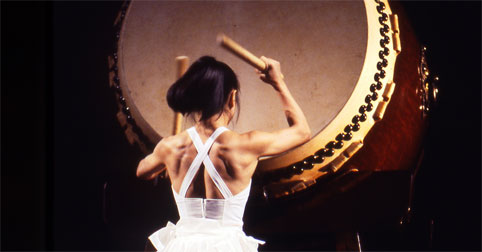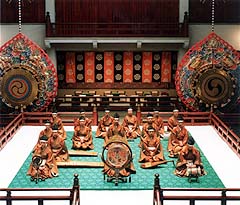MUSICAL CULTURE OF JAPAN

The musical life of Japan today is very much like that of North America and Europe, with all of the familiar popular music, in addition to symphony orchestras, period instrument ensembles, performance art, and opera. Arts groups from all over the world come to Japan on tour to perform. Traditional styles associated with Japanese identity are still present, however, and are enjoying renewed vigor after long being overshadowed by Western influences. Japanese traditional music includes both art and folk styles.
CHARACTERISTICS OF THE TRADITIONAL JAPANESE ART MUSIC

Melodies based on pentatonic scales are the most important element in Japanese music. Unlike Western art music, harmony does not exist in Japanese art music.
Ensembles are often made up of just a few instruments, each with its own timbre. Each part in an ensemble performs a slightly different version of the same melody in this transparent texture The way a Japanese instrument is played,including gestures ,is as important as the quality of its sound.A steady beat is often not present in traditional Japanese art music, but when it is present, it tends to be in duple meter and never goes very fast. The whole idea of rhythm is flexible, and traditional Japanese musicians are known for their skill in ornamenting a melody or rhythm.
One of the oldest styles of music currently being performed is the Japanese traditional court music known as gagaku. People in Japan have been performing gagaku since the fifth century! This musical style is also used for Shinto religious ceremonies. Gagaku instrumentation includes winds, plucked strings, and percussion.

Many Japanese people studied and mastered Western art and pop music in every aspect during the twentieth century. Beginning in the 1990s, however, the government of Japan decided to increase the teaching of traditional Japanese music in the schools. Now each middle-school student in Japan is required to learn to play at least one Japanese instrument. Recently many Japanese young people have become interested in popular music from Singapore, Indonesia, and Africa. Balinese and Javanese gamelan study is available in universities in Japan, as well.

